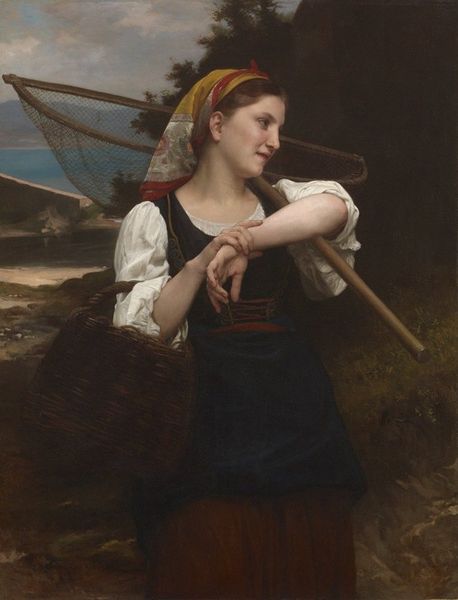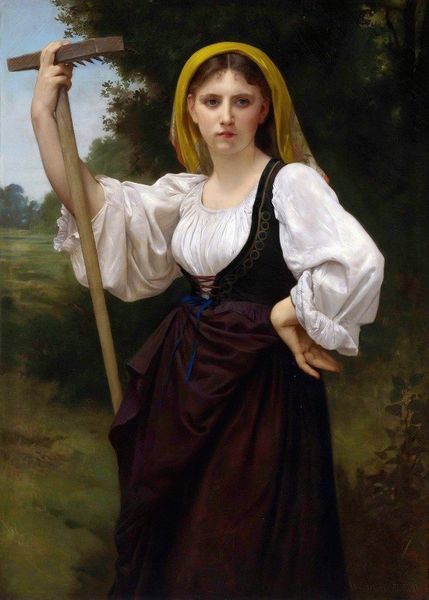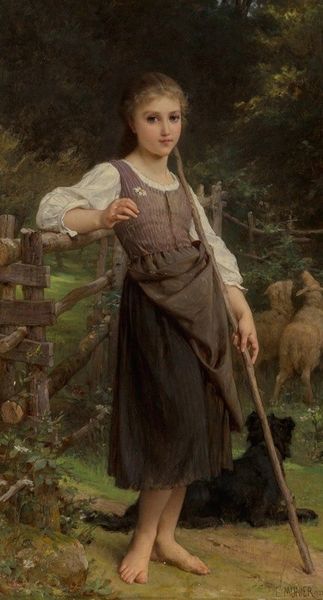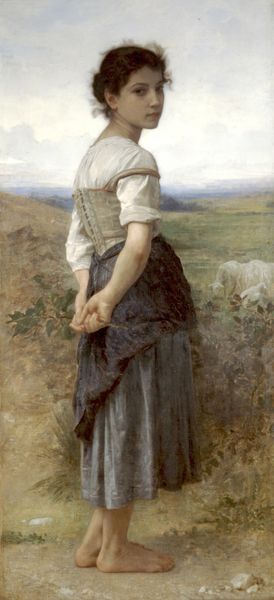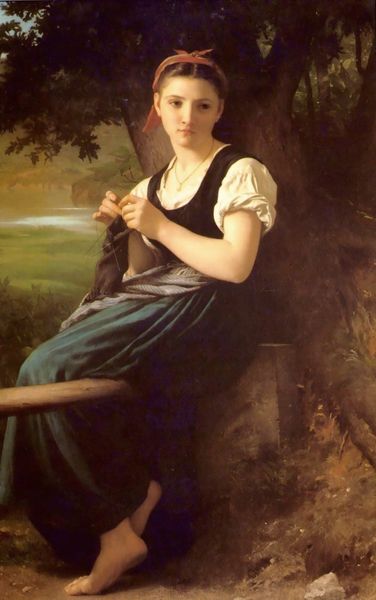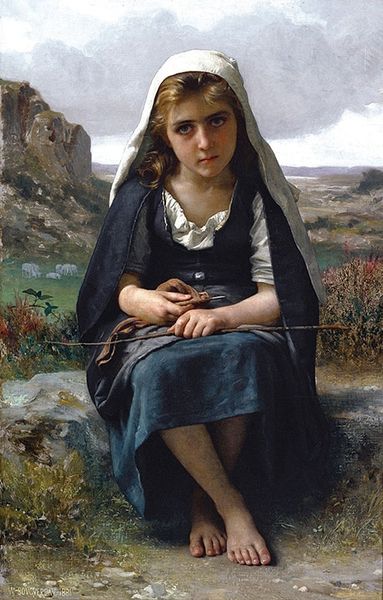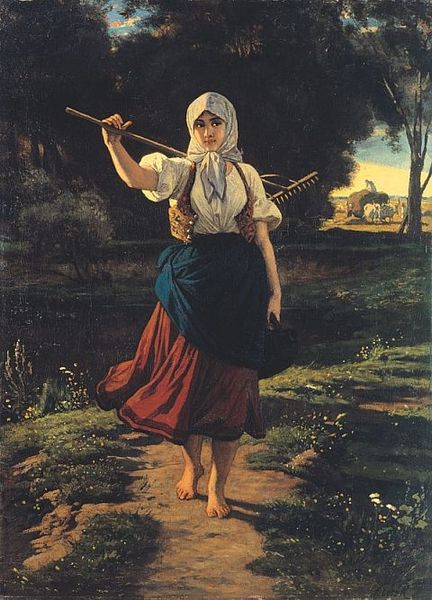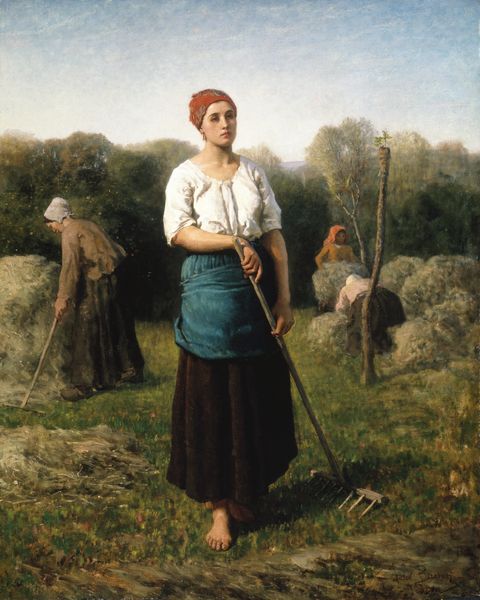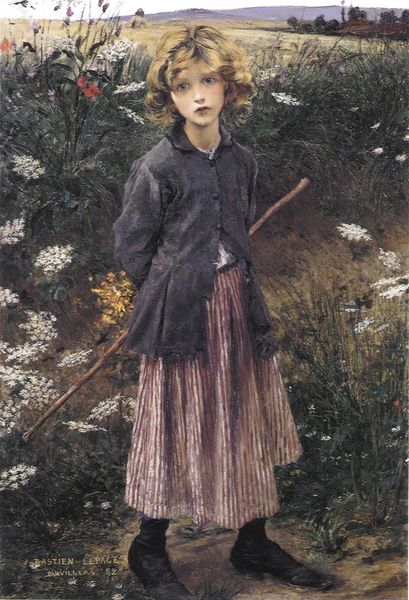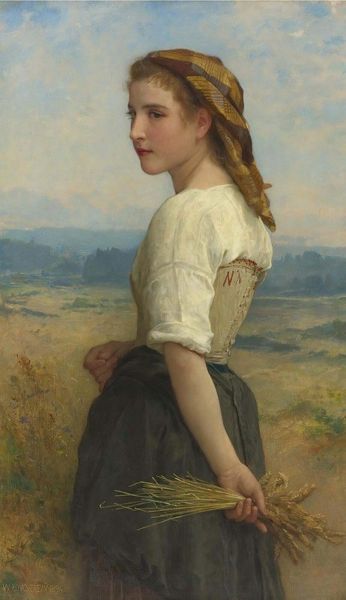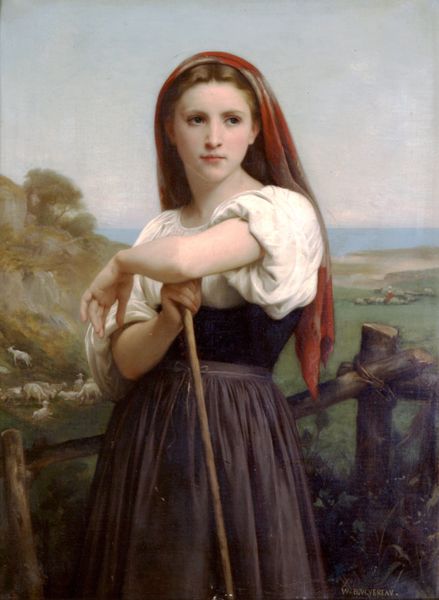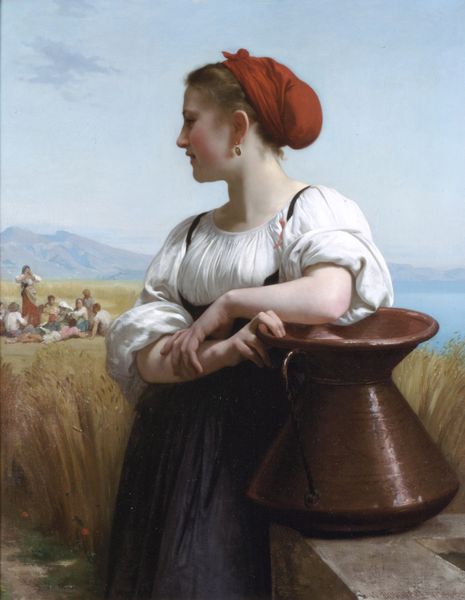
painting, oil-paint
#
portrait
#
painting
#
oil-paint
#
landscape
#
academic-art
#
realism
Dimensions: 81 x 101.5 cm
Copyright: Public domain
Curator: Here we have "Faneuse," or "Girl with a Rake," painted by William Bouguereau in 1869. It’s a wonderful example of his academic style. Editor: The first thing that strikes me is the serene stillness. The girl is posed mid-labor, but her gaze is distant, contemplative, almost romantic. Curator: Absolutely. Bouguereau, though working amidst Realism, often idealized his subjects. He was incredibly popular during his time, celebrated for his ability to evoke classical beauty within a contemporary context. Editor: You see how she leans on the rake? It is an almost ancient symbol. Rakes have appeared for centuries, not just for farmwork but they can even carry death associations, in the "Grim Reaper." But in this instance, it signifies the gentle harvest, youth in agrarian settings, an endless loop of natural rhythm, etc. Curator: Exactly. The Academy embraced moral subjects depicted with masterful technique, showcasing control and skill while downplaying social commentary. This piece found favour in art shows because it represented traditional, idealized scenes of rural life during rapid industrialization and urbanization. Editor: And even though her clothes suggest labour, everything is very clean and neat. It speaks to an idyllic notion of pastoral life, doesn't it? I think it’s clear how there is beauty, dignity, but distance also, in presenting labour with a composed romanticism. It serves to reinforce social norms—her virtue, role, the romantic escape. Curator: The painting then served as an image to uphold specific visions. By elevating genre paintings with impeccable technique, academic art affirmed certain ideas about history, class, and nation in an engaging manner for audiences. The market demand helped shape its production. Editor: When I reflect on "Faneuse," it reinforces my fascination with symbols—the simple rake can become a mirror reflecting the weight and hope cultures placed on working hands and life in pastoral spaces. Curator: Indeed. And by considering the role art and artists had to fulfill at the time—moral guidance and affirming national pride, this particular painting is just that! I appreciate your reminder about that symbolic complexity.
Comments
No comments
Be the first to comment and join the conversation on the ultimate creative platform.
